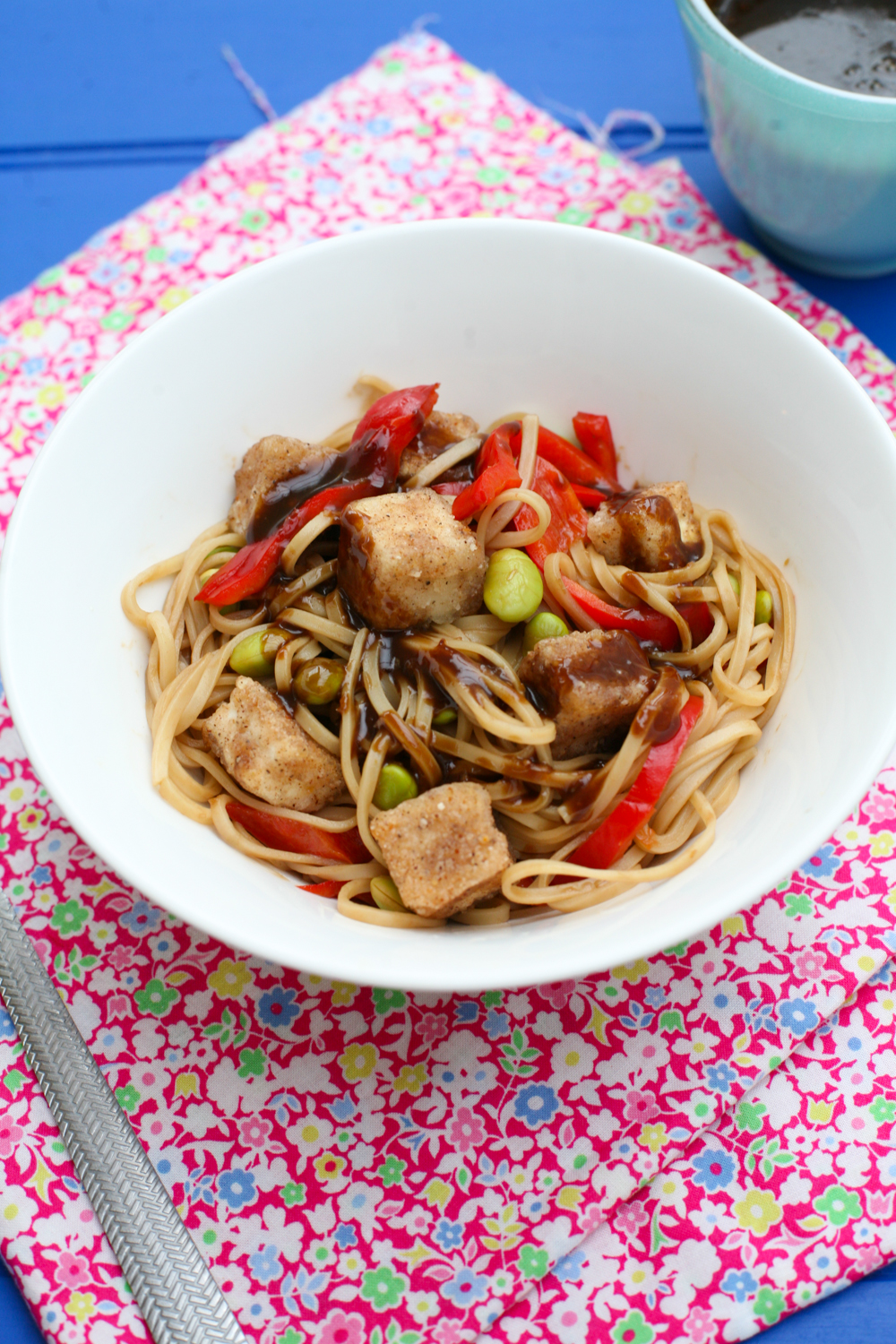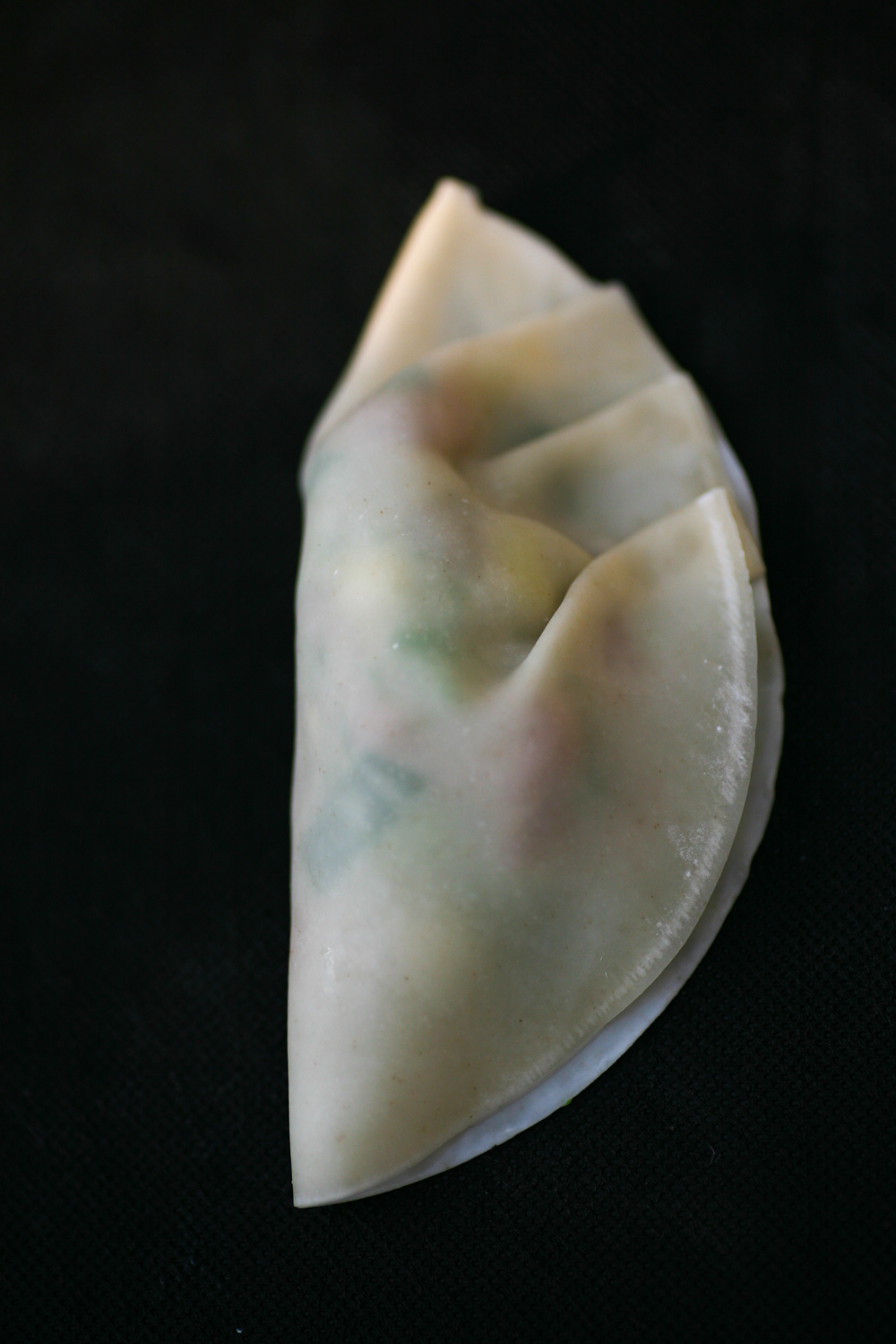I have a love affair going on when it comes to the ubiquitous Vietnamese sandwich known as banh mi. If the truth be told I love them in every form: pork, chicken, fish, beef, tofu – you name it and I pretty much love all the varieties that you can have. I love the cruchiness and sweet and sour piquant from the pickle, combined with the freshness of the coriander, the spices from the marinaded tofu/meat/fish, the chilli and the freshness from the baguette. Every bite has so much action going on for the palate – sweet, sour, umami chilli notes.
They are not as much of a chore as you’d expect if you make them at home. I tend to buy the baguette, but if you have time on your hands, then I can totally recommend The Banh Mi Handbook by Andrea Nguyen to show you how to make the traditional baguette as well. Father Christmas kindly popped it in my stocking a few years back – such a thoughtful fella!
I’ll talk your through it step by step, but once you’ve made the pickle – this takes no time at all – you’re pretty much all set. The pickle also lasts up to a month in the fridge so there is no need to use it all in a couple of days. I am going to show you how to do the tofu version, but if you prefer to make it with chicken or pork then the same marinade can apply.

I used the silken firm tofu, which you need to handle with care. Some brands are firmer than others, but ultimately if it falls apart a little it doesn’t really matter once it is in the baguette.
There are a few ingredients that you really need to get hold of before making a banh mi:
- daikon (also known as mooli or white radish) – it looks similar to horseradish but has a lot milder flavour. I pick mine up from my local Indian grocer.
- carrots
- rice wine vinegar
- a crunchy baguette
- maggi seasoning sauce – according to Andrea Nguyen for a ‘first class banh mi, drizzle on some maggi sauce; it will boost each bite with an umami hit’ – she goes on to explain that ‘it is practically synonymous with banh mi’. I picked mine up from my local Asian supermarket but you can also order it from Ocado here
- chillies to give the heat injection
- fresh coriander
- cucumber to add texture and crunch
- mayonnaise (vegan if you want to keep the whole meal vegan)
- sriracha sauce
- 1 litre jar for the pickle
So to begin with you need to prepare the pickle. Trust me it is quick and easy to make.
Carrot and Daikon Pickle
500g daikon, peeled and cut into matchsticks *
2 large carrots, peeled and cut into matchsticks (as above)
1 tsp salt
2 tsp caster sugar
100g caster sugar
300ml rice wine vinegar
250ml warm water
1 litre storage jar (can be slightly bigger but no smaller)
- After peeling, cut the carrot and daikon up into equal size matches and place them in a bowl.
- Sprinkle the salt and the teaspoons of sugar over the carrots and daikon and gently massage them gently for a few minutes using your hands. This will make them become softer and more bendy.
- Wash and drain them thoroughly under some cold water before placing them into your jar.
- In a separate jug mix the rice wine vinegar, caster sugar and warm water so that the sugar dissolves and then pour into the jar with the carrots and daikon. Discard any left over brine. If you need a little extra brine to cover the carrots and daikon simply add a little more warm water.
- Refrigerate for up to a month.
*the exact size of the matchsticks is irrelevant, obviously not too big, but do make sure that the carrot and daikon matchsticks are of similar size if possible. I have seen them super skinny and slightly wider like mine below. Both ways taste delicious.
Matchstick daikon and carrots above and with salt and sugar ready to be massaged below.
Once your carrot and daikon pickle is resting it’s now time to make the marinade for your tofu. I slice my block of tofu gently into about about 9slices. You don’t want to cut them too thin or they will easily break.
Place them gently in a bowl and add the marinade, which consists of: tamari (or soy sauce), 1/2 lime and zest, 1 tsp of minced garlic, 1 tsp minced ginger and cracked pepper. Coat evenly and then leave to marinade for around 20 minutes. Heat some groundnut (or sunflower) oil in a pan and then let the tofu cook gently on each side for around 3-5 minutes before turning over. It wants to be nicely bronzed.
Tofu Marinade
349g firm tofu (or similar size pack), sliced
2 tbsp tamari (or soy sauce)
1/2 lime, juice and zest
1 tsp minced garlic
1 tsp minced ginger
liberal amount of cracked pepper
1 tsp groundnut/sunflower oil
- Slice the tofu gently into approximately 9 pieces and then place in a bowl and cover with the marinade ingredients.
- Leave to marinade for 20 minutes.
- Heat the pan with oil and gently space out the marinated sliced tofu. On a medium low heat, leave the tofu for around 3 minutes to see if it is nicely bronzing. If it is then carefully turn it over for a further 3 minutes. Leave a little longer if it requires more time to bronze.
- Remove from pan and leave to cool whilst you prepare the rest of the sandwich.
If you are using pork or chicken make sure to slice the the meat thinly and leave to cook for longer on both sides.
The next part is easy. You simply mix a couple of tablespoons of mayonnaise (homemade, vegan or shop bought) and add sriracha to taste. I usually find that around 1/2 tbsp works really well.
Sriracha Mayo
2 tbsp mayonnaise (homemade, vegan or regular shop bought)
1/2 tbsp sriracha, or to taste
- Mix the two ingredients together to form a salmon pink sauce. Taste and add more sriracha if necessary.
The next part is the assembling. First you need to slice the baguette, but not all the way through. Take out some of the white bread part within – this allows more space for the fillings. Now follow the instructions below.
Assembling the Bahn Mi
few drops of maggi seasoning sauce
1/4 cucumber, thinly sliced
handful of fresh coriander
2 red chillies, chopped – optional
- Spread out the sriracha mayo evenly along the baguette followed by a few drops of maggi seasoning sauce.
- Next add the cucumber, tofu followed by some of the pickled carrot and daikon. You can also add some thinly spiced fresh red chillies for extra heat if necessary or omit this part and just add the fresh coriander.
It sounds terribly long winded but I assure you that it really doesn’t take that long at all. The pickle will last for ages and is pretty quick to make in the first place. The marinading is straightforward and the sriracha mayo takes seconds. So give it a whirl. Trust me you’ll become as addicted as me about banh mi.













































